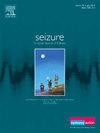目前英国社区在终止癫痫持续状态时口服咪达唑仑的临床实践和经验:抢救癫痫药物和培训(REMIT)研究。
IF 2.7
3区 医学
Q2 CLINICAL NEUROLOGY
引用次数: 0
摘要
背景:癫痫是世界范围内最常见的神经系统疾病之一,具有显著的死亡风险,部分原因是癫痫持续状态(SE)。终止SE是药物抢救治疗的目标。本调查评估英国医疗保健专业人员的临床实践和经验,以社区为基础的抢救治疗处方。方法:采用李克特式问卷和自由文本问卷组成的21项横断面在线问卷。它通过非歧视性滚雪球方法分发给癫痫专科护士协会(ESNA)和英国国际抗癫痫联盟(ILAE)的成员。定量分析采用卡方检验、fisher精确检验和Mann-Whitney检验。通过NVivo 14软件分析定性数据,遵循Braun和Clarke方法。结果:86名受访护士(n = 64)和医生(n = 21)参与调查。参与者的反应反映了应急管理计划和口腔咪达唑仑(BM)作为终止强直阵挛性癫痫发作的首选治疗的指南一致性。然而,医生和护士在BM的处方实践,包括最大剂量/天,停药计划和多病患者的使用方面存在显著差异(P < 0.05)。确定了八个主题,其中一些暗示了患者/护理人员对BM的过度使用,误用和滥用的担忧。结论:这是第一次对使用抢救疗法特别是BM的SE社区管理提供见解的研究。需要进一步的循证指南来指导BM在多病患者中的应用及其处方。需要健全的保护协议和警惕来规范BM的误用和滥用潜力。即将到来的以社区为基础的技术可以为抢救药物的循证效用提供客观保证。本文章由计算机程序翻译,如有差异,请以英文原文为准。
The current clinical practice and experiences in buccal midazolam prescribing in community for status epilepticus termination in the United Kingdom: The Rescue Epilepsy Medication and Training (REMIT) study
Background
Epilepsy is one of the commonest neurological conditions worldwide and confers a significant mortality risk, partly driven by status epilepticus (SE). Terminating SE is the goal of pharmaceutical rescue therapies. This survey evaluates UK-based healthcare professionals’ clinical practice and experience in community-based rescue therapy prescribing.
Methods
A cross-sectional, 21 item questionnaire composed of Likert-style and free-text based questions was administered online. It was distributed through a non-discriminative snow-balling methodology to members of the Epilepsy Specialist Nurses’ Association (ESNA) and the British International League Against Epilepsy (ILAE). Quantitative analysis used Chi-squared, Fishers’ exact and Mann-Whitney tests. Qualitative data were analysed through NVivo 14 software, following Braun and Clarke methodology.
Results
86 participants comprising of nurses (n = 64) and doctors (n = 21) responded. Participants’ responses reflected guideline-concordant use of emergency management plans and buccal midazolam (BM) as a first-choice therapy for terminating tonic-clonic seizures in SE. However, significant variation (P < 0.05) was found between doctors and nurses in prescribing practices of BM including maximum dose prescribed/day, withdrawal plans and the use in multimorbid patients. Eight themes were identified with some suggestive of concerns of overuse, misuse and abuse of BM by patients/carers.
Conclusion
This is the first study to give insights to community management of SE using rescue therapies particularly BM. Further evidence-based guidelines are needed for BM use in multimorbid patients and for its deprescribing. Robust safeguarding protocols and vigilance is needed to regulate BM's misuse and abuse potential. Oncoming community-based technology could provide objective assurance for evidencing utility of rescue medications.
求助全文
通过发布文献求助,成功后即可免费获取论文全文。
去求助
来源期刊

Seizure-European Journal of Epilepsy
医学-临床神经学
CiteScore
5.60
自引率
6.70%
发文量
231
审稿时长
34 days
期刊介绍:
Seizure - European Journal of Epilepsy is an international journal owned by Epilepsy Action (the largest member led epilepsy organisation in the UK). It provides a forum for papers on all topics related to epilepsy and seizure disorders.
 求助内容:
求助内容: 应助结果提醒方式:
应助结果提醒方式:


